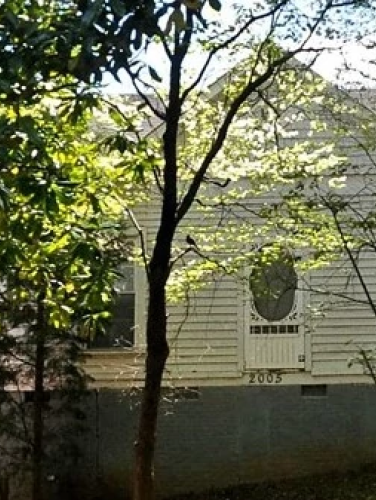
Atherton Mill House
(ca. 1893)
The last surviving mill house of the Atherton Mill village provides a unique insight into mill owner D. A. Tompkins’ philosophy of workforce management.
2005 Cleveland Ave, Charlotte, NC 28203
The Atherton Mill House represents an essential component of what was the first cotton mill owned and operated by the D. A. Tompkins Company and its founder, president, and namesake Daniel Augustus Tompkins (1851-1914). The noted industrialist, founder of the Charlotte Observer, and spokesman for the principles and policies of the New South movement believed in the provision of attractive and comfortable living quarters for his millworkers consistent with their rural backgrounds, even though that meant not equipping the houses in his Atherton Mill village with such purportedly unfamiliar "modern improvements" as closets, bathrooms, and hot water. In February 1893, while the Atherton Mill was still under construction in Charlotte’s new Dilworth neighborhood, the D. A. Tompkins Company purchased an entire block within the neighborhood to build twenty houses for its Atherton workers. The 2005 Cleveland Avenue house is the last surviving house from the original Atherton Mill village.
Property Quick Links
A native of Edgefield County, South Carolina, and graduate of Rensselaer Polytechnic Institute in Troy, New York, Tompkins arrived in Charlotte in March 1883. Having served for several years as a chief machinist of the Bethlehem Iron Works in Bethlehem, Pennsylvania, he secured a franchise from the Westinghouse Machine Company to sell and install steam engines and other industrial machinery, and selected Charlotte as the location for his company due to the city’s excellent railroad facilities. The D. A. Tompkins Company opened for business in March 1883. Tompkins promoted and encouraged the establishment of cotton mills and cotton seed oil mills throughout the South. Regarded as a pioneer in the cotton seed oil business, he co-founded the Southern Cotton Oil Company in 1887, and built and operated eight cotton seed oil mills between Columbia, South Carolina, and Houston, Texas. Tompkins professed that his firm had built more than 100 cotton mills and 250 cotton seed oil mills by 1906.
Tompkins used the houses in the Atherton mill village as illustrations in textbooks – most notably, Cotton Mills: Commercial Features (1899) – that he published to instruct and assist cotton mill builders and operators. His books are considered among the most influential writings on those subjects during that period. His mill villages consisted of three or four different standard house models randomly scattered throughout the community to suggest individual construction rather than corporate housing. Although Atherton’s mill village often provided such amenities as evening courses, trees and seeds for planting in the houses’ small lots, and company picnics and other activities, Tompkins also employed the "rough rule" in assigning families to his residential units, meaning that – in addition to rent rates that ranged from 75 cents to $1 per room per month – one inhabitant also had to be supplied for mill work for every room in the house.

